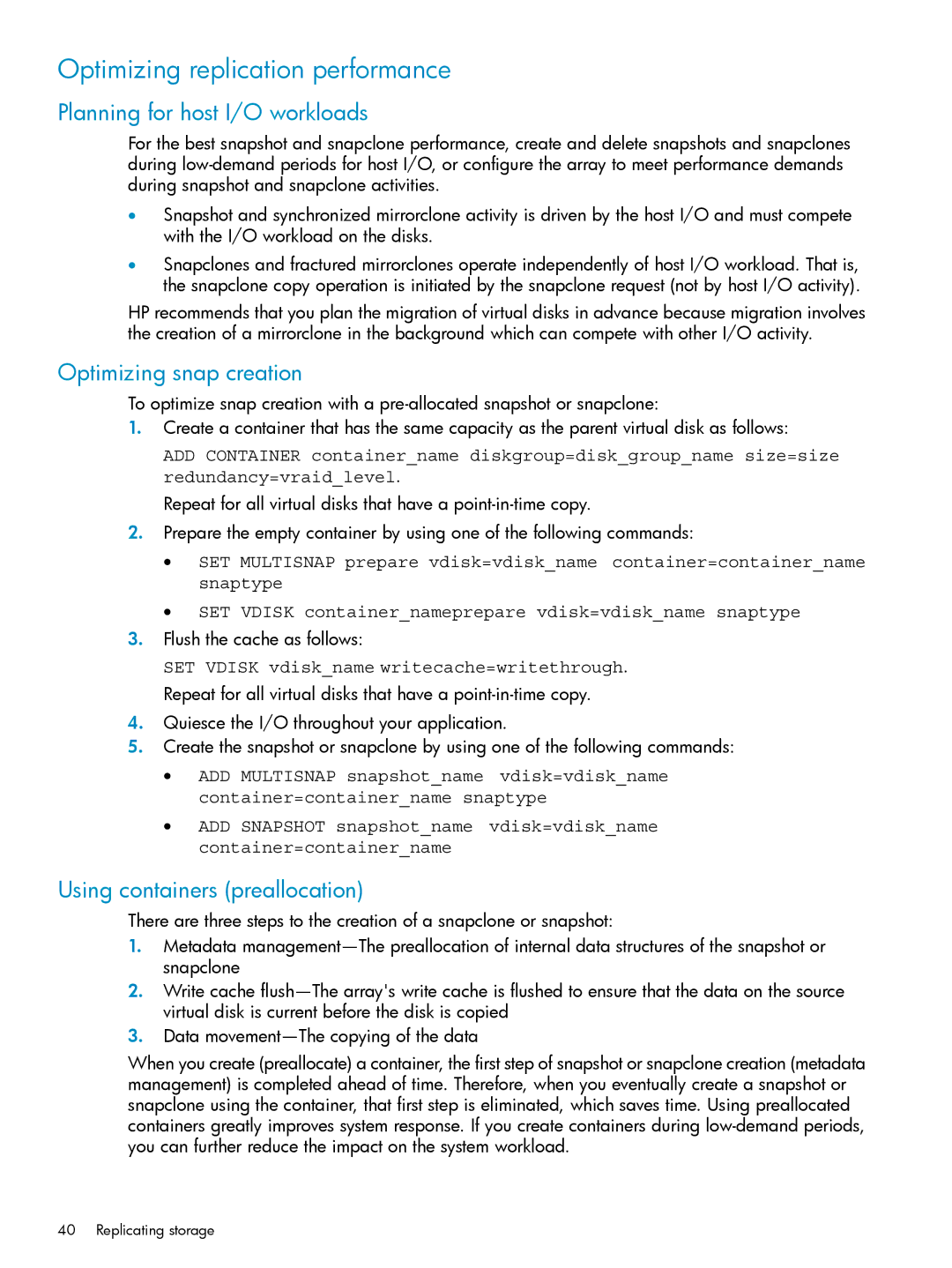Optimizing replication performance
Planning for host I/O workloads
For the best snapshot and snapclone performance, create and delete snapshots and snapclones during
•Snapshot and synchronized mirrorclone activity is driven by the host I/O and must compete with the I/O workload on the disks.
•Snapclones and fractured mirrorclones operate independently of host I/O workload. That is, the snapclone copy operation is initiated by the snapclone request (not by host I/O activity).
HP recommends that you plan the migration of virtual disks in advance because migration involves the creation of a mirrorclone in the background which can compete with other I/O activity.
Optimizing snap creation
To optimize snap creation with a
1.Create a container that has the same capacity as the parent virtual disk as follows:
ADD CONTAINER container_name diskgroup=disk_group_name size=size redundancy=vraid_level.
Repeat for all virtual disks that have a
2.Prepare the empty container by using one of the following commands:
•SET MULTISNAP prepare vdisk=vdisk_name container=container_name snaptype
•SET VDISK container_nameprepare vdisk=vdisk_name snaptype
3.Flush the cache as follows:
SET VDISK vdisk_name writecache=writethrough. Repeat for all virtual disks that have a
4.Quiesce the I/O throughout your application.
5.Create the snapshot or snapclone by using one of the following commands:
•ADD MULTISNAP snapshot_name vdisk=vdisk_name container=container_name snaptype
•ADD SNAPSHOT snapshot_name vdisk=vdisk_name container=container_name
Using containers (preallocation)
There are three steps to the creation of a snapclone or snapshot:
1.Metadata
2.Write cache
3.Data
When you create (preallocate) a container, the first step of snapshot or snapclone creation (metadata management) is completed ahead of time. Therefore, when you eventually create a snapshot or snapclone using the container, that first step is eliminated, which saves time. Using preallocated containers greatly improves system response. If you create containers during
40 Replicating storage
